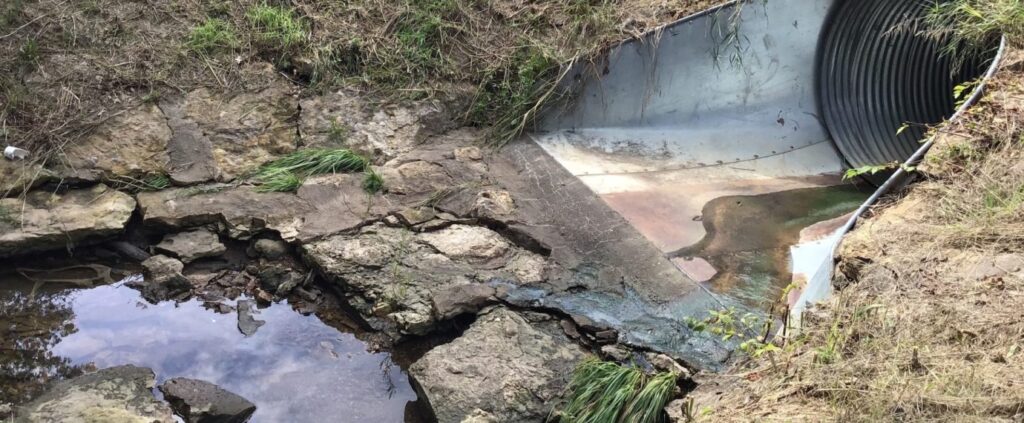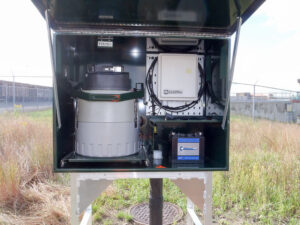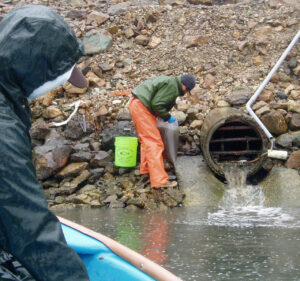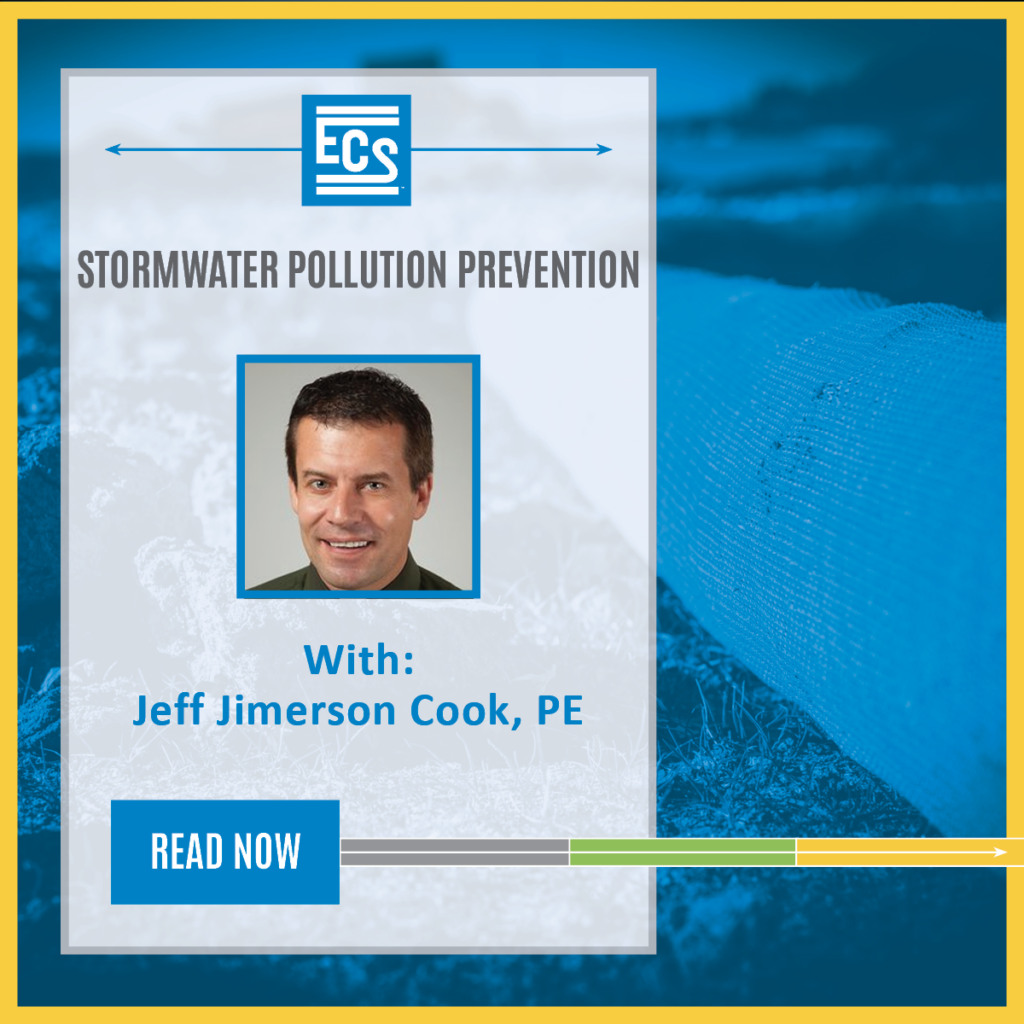
Stormwater pollution prevention planning (SWPPP) for construction activities—also known as erosion, sedimentation & pollution control (ES&PC) planning—is implemented by construction-site operators to prevent turbidity (lack of clarity in stormwater) and other potential pollutant-runoff impacts to surface waters and groundwater.
SWPPPs are important to define the planning procedures how construction professionals manage stormwater, dispose of wastes or wastewater to protect waterways, prevent violations of surface and groundwater quality and safeguard surrounding ecosystems and public health.
According to the U.S. Environmental Protection Agency (EPA), “A SWPPP is more than just a sediment and erosion control plan. It describes all the construction site operator’s activities to prevent stormwater contamination, control sedimentation and erosion and comply with the requirements of the Clean Water Act.” Regulatory requirements arise from the Clean Water Act which implements the National Pollutant Discharge Elimination System (NPDES). NPDES permits have been developed specifically for each state to define specific SWPPP requirements, although NPDES permits for different states include the same fundamental concepts.
Responsible stormwater planning protects the environment and avoids fines, potential delays or shutdowns that regulatory inspectors can otherwise enforce. There are also indirect financial benefits for responsible, sustainable development within the local community.
There are several key elements to consider when stormwater pollution prevention planning.
Incorporating best management practices

Best management practice (BMP) inspections are used to determine whether actions used to minimize erosion and/or sedimentation are appropriately implemented and can be enhanced if determined to be necessary.
An effective SWPPP should include:
- Sufficient best management practices and properly designed structural controls.
- Appropriate inspection schedules and stormwater sampling plans.
- Corrective action procedures to implement, when necessary.
- Reporting and documentation requirements.
Proper implementation of BMPs and controls is believed to be critical in preventing pollutant-runoff impacts. Effective BMPs include:
- Protective buffers and additional controls for sensitive habitat areas, such as wetlands.
- Temporary mulching and seeding for areas on-site that are to be undisturbed for 14 days or more to avert ongoing direct exposure to rain.
- Proper management of placing construction waste in dumpsters.
- Following proper fueling procedures for construction equipment.
Leveraging storm-tracking data
Storm tracking is an effective tool that helps personnel determine when rainfall events will likely occur on-site, to then verify that BMPs and structural controls are installed and functioning correctly beforehand.
A strategy to integrate storm-tracking data involves ongoing review of pollution prevention program effectiveness, where BMPs/controls can be supplemented and enhanced, as appropriate (especially if projected storm events exceed the typical design criteria for structural controls, such as temporary sediment basins).
Challenges and differences across environments and industries
Urban settings present unique challenges due to the impervious pavement and building areas (where impervious surfaces are not amenable to stormwater infiltration), which leads to large volumes of stormwater flow that cause flooding and overloading of stormwater conveyance devices. Stormwater retention measures are key during construction activities and post-development to prevent excessive stormwater runoff flow to stormwater conveyance systems and receiving surface waters.
Rural settings often include agricultural activities where pesticides and animal waste can impact runoff to receiving waters. Such impacts should be controlled as much as possible, to prevent the reduction in surface water quality.
Stormwater requirements also differ across industries.
- Construction activities primarily involve controlling erosion and sedimentation. Responsible site practices and erosion-control techniques during stormwater services offer pollution prevention and sustainability for the surrounding environment.
- Industrial activities can involve a variety of petroleum, chemical and raw materials being introduced into stormwater runoff if not adequately controlled.
- Municipal sectors typically involve public service facilities (e.g., wastewater treatment plants, landfills) where measures should be implemented to prevent surface water and land impacts.
An inadequate SWPPP implementation can lead to compromised surface-water quality, which can kill aquatic wildlife, cause freshwater aerobic streams to become anaerobic, and cause objectionable visual/olfactory conditions within receiving streams.
On the other hand, a well-developed stormwater pollution prevention plan and proper implementation helps preserve surface-water quality and promotes responsible development, where pollutant impacts are minimized.
New technologies are available for stormwater pollution prevention which include (but are not limited to):
- High-performance turf-reinforcement mats.
- Specialized stream-crossing structures that promote the growth of riparian vegetation.
Safety considerations

ECS integrates safety into our culture by developing it as a value. Health and safety plans are completed before starting a client project and are routinely reviewed and updated as necessary. Our teams’ safety training and safety plans take into account the hazards associated with construction-site vehicle traffic, terrain, biological hazards and other hazards typically present.
Much like a solid health and safety plan, the SWPPP is not a set-it-and-forget it program. The stormwater pollution prevention plan file should be a living document. ECS conducts routine reviews of on-site conditions against the SWPPP which determines whether it should be updated, particularly if there are unexpected changes to site conditions.
About the Author
Jeff Jimerson Cook, P.E., is an environmental senior project engineer with our Lawrenceville, GA, office. He has more than 28 years’ experience as an environmental engineering consultant with a focus on water, stormwater and wastewater management programs and compliance services. He is a certified Professional Engineer in Georgia and Virginia, a Georgia Level 1 Design Professional for erosion sediment and pollution control and a Georgia wastewater industrial operator.

